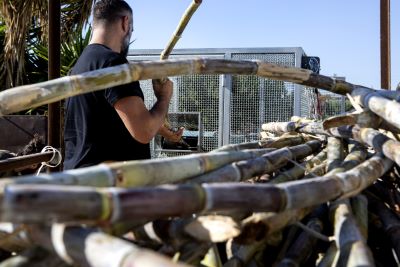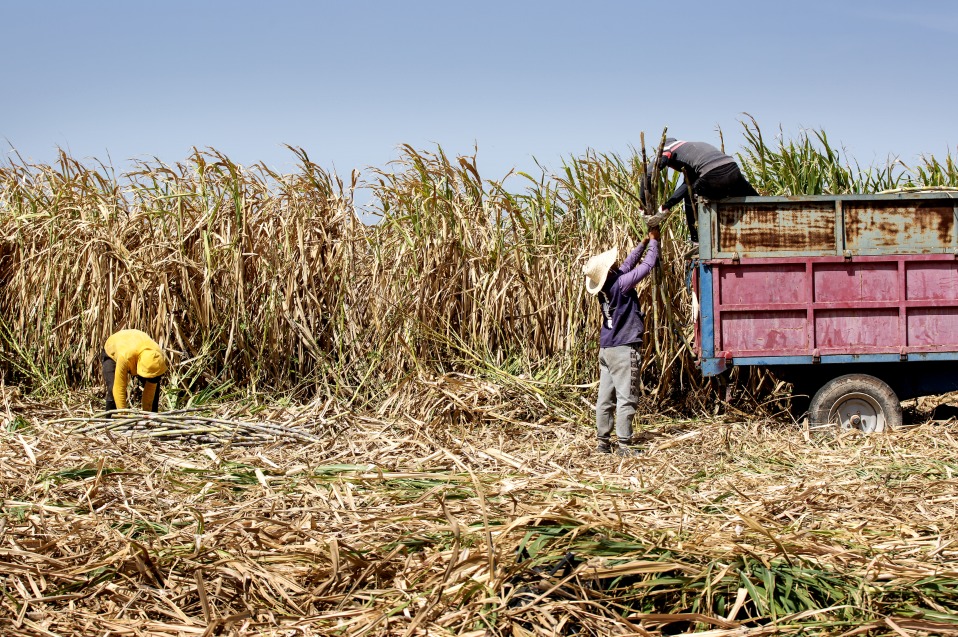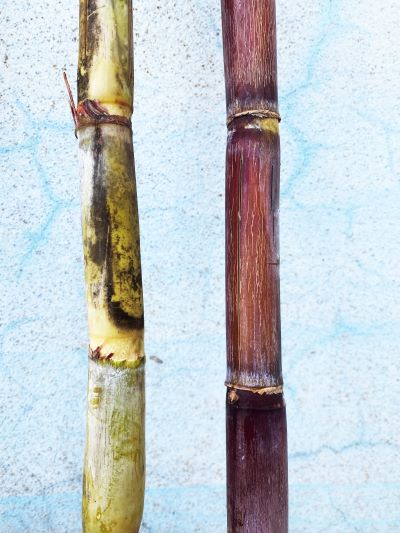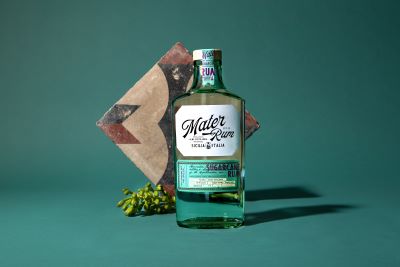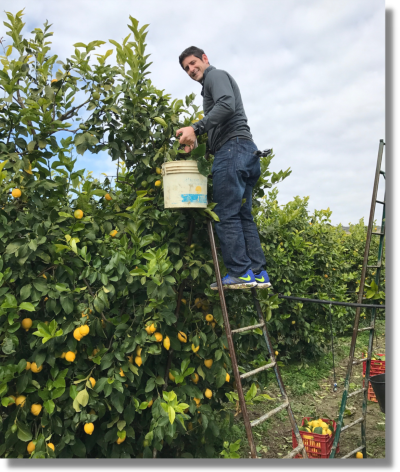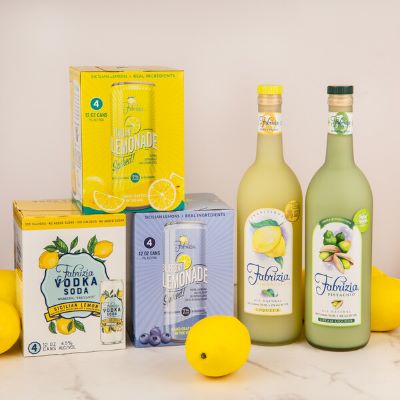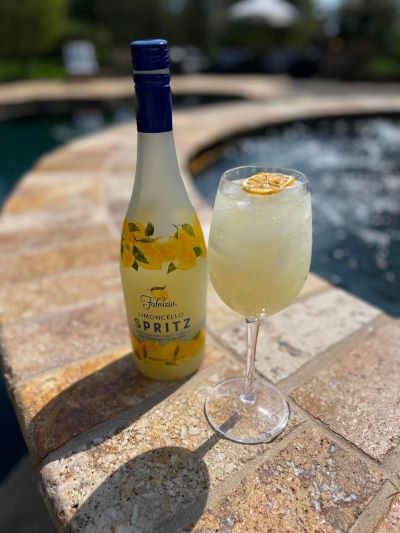Hugo Gallardo enjoyed his job for the first 20 years of his marketing and advertising career. But at some point, he says, the fun just started to fizzle. Instead, he faced a mundane sequence of meetings, results, new business, travel, more meetings, more results, more business, and more travel. Then his wife, Annalisa, got pregnant, which made him really rethink all the meetings and travel. He was in his forties and knew he needed a change.
"I got involved in distillation as a hobby while I was living in Australia," Hugo says. "When we started to think about what we wanted to do with our lives, we put things together. The hobby was becoming a passion."
Today, that drive has led him to co-found Alma Sicilian Artisan Distillery. The company produces Mater Rum and Mater Gin from sugarcane grown in Sicily, an important center of sugar production under Arab rule.
Hugo and I spoke about Sicily's sugar history and Alma's start. He shared more about his sugarcane crops and distillation process. The former marketing executive knows how to tell a good story, something that's bound to help as the company aims to expand beyond Italy.
Tell us how you got started.
I read a lot about distilling history and how the spirits we know right now have become what they are. My passion for advertising was getting lower, and my passion for distilling was increasing—the history of the different spirits, raw materials, and the agricultural parts of the raw materials. So, we decided to open a small craft distillery. The original plan was to open it in the Philippines.
But long story short, the Philippines got closed for COVID, and I got stuck in Sicily because my wife is from Sicily, and we came here to spend some time with her parents before we brought their granddaughter to the Philippines.
We left our housing in Milan and quit our jobs, and I started to rethink the original plan because we didn't know when they would reopen the Philippines. I had to make a decision. I decided to try to open in Sicily.
When I started reading about rum, I discovered sugarcane had grown in Sicily for seven centuries. So, I thought we could try it; there was good storytelling.
In the beginning, it was more of an act of faith because we didn't know where to get the seeds, if sugarcane would grow, or if the yield would be good enough to produce something in industrial terms. So, we started doing some trials.
Meanwhile, we found the warehouse when we built our distillery, and we started to buy everything we needed to be operative and then progress. It was full COVID time, so everything was closed. You had to make all the requests by email, and it was a complete pain because everything was slow. So, after three years, in January 2021, we got all the permits, and the distillery was able to start production in April of last year.
Co-founder Annalisa Spadaro
Without a background in agriculture, was farming sugarcane a challenge?
To be honest, sugarcane is an easy crop. It needs water, and it needs to be fertilized, but it's a very resistant crop. We are located outside the historical cultivation zones. There are a lot of problems with being out of the historical cultivation zones. Still, there's an advantage in that there are no diseases because there are no other sugar plantations. We cannot be infected by bacteria or fungi or whatever.
The big challenge for us is harvesting. We have to do it by hand because it doesn't make sense to mechanize such a small plot. We are actually cultivating three hectares, which is nothing in terms of industrial production. Economically speaking, it doesn't make sense to mechanize the harvesting. And that requires a high investment in energy, work, and money.
Sugarcane harvesting is done by hand.
Why did sugarcane disappear from Sicily?
The main reason was that America happened. America was discovered in the 15th century, and on his second voyage, Columbus brought with him slave labor. The soil was perfect; there was much more water available. So, the sugar in Sicily was uncompetitive in the market since American sugar was much cheaper. It wasn't profitable anymore.
What shocked me was that it had completely disappeared from the island's culture. The names of a few areas around Palermo are etymologically related to sugarcane, but I was curious to discover that first, no one knows about sugarcane cultivation, and second, the sugarcane industry has no remaining buildings or presence on the island.
Alma Sicilian Artisan Distillery's Sampieri plot
You grow in Sampieri and Marina di Modica. How do the unique soil and climate characteristics influence flavor and quality?
Marina di Modica was the first plot; the soil there is almost white and retains much more water than in Sampieri, where there is red soil. Even if they are five minutes apart by car, the sugarcane grows quite differently in both places. In Marina di Modica, it is much taller, but in Sampieri, it's a little bit shorter and has a really salty flavor. We want to keep both because the first one is for our gin, and the second one, the Sampieri one, provides us with this salty olive characteristic.
Yellow and purple sugarcane
You grow two varieties of sugarcane: purple and yellow. How do they contribute to the final product?
We are still learning about our raw products because it's the second year, and we are making some changes this year. We are using a single distillation, so the final product is different. We still have to better understand whether the difference is because of the sugarcane or the distillation method. However, the main difference is that the yellow cane has a strong olive smell, and you can feel it in the nose and the mouth. It also has this salty touch in the mouth.
The purple has this touch of wildflowers and marmalade but also truffles.
They are very different in terms of bouquet. Yellow cane is much fresher and saltier and provides our rums with something we really like: this salty olive profile.
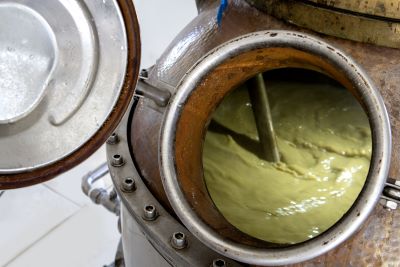
Alma Sicilian Artisan Distillery is the only distillery in Italy that grows and processes sugar cane directly.
What is unique about your fermentation and distillation process?
We are not reinventing the wheel. There is a lot of hype about natural fermentation and spontaneous fermentation, and it's something that I would like to try in the future. The thing about that is that you completely lose control of your fermentations. So it could be nice, or it could be a complete disaster.
Since we don't produce that much product, we wanted to start safely with the fermentation process. Last year, we used yeast; this year, we decided to change it, and we are using wine yeast.
We changed because the rum yeast was selected to pump certain esters and, of course, the most easy-going esters—banana and pineapple, the kinds of flavors that everyone loves. We decided to use a much more neutral yeast that shows the raw product. And we are very happy with the result.
Then, in distillation this year, we are using a small column of six plates. It's a column that we can switch off every plate. We can decide if we use the six plates, just four, or just one. It is very versatile. We just did a single distillation using the small column. Since sugarcane is a very rich raw material by itself, we felt that going with double distillation, we lost something. So, we decided to go through just one distillation.
Mater Rum: Made in Sicily with Sicilian plants
What experience do you hope to share?
There are two levels of experience. One is the people who come to the distillery; they immediately become brand ambassadors because of the location and how we work, sharing our passion, history, and what we're trying to do. I'm pretty sure the people who leave the distillery after a tasting or visit enjoy the moment. One hundred percent think that we are crazy in a positive way.
The second level of experience is the people in a bar who are having a drink, and our product is proposed to them, or they decide to try it. And I'm pretty sure a few are surprised because it's a new provenance for Sicily.
Then, we provide a lot of information through our packaging and bottles, which plays a huge role in communicating what we do and want to express. In some way, I hope they get the feeling that we have just met.
Finally, the product: I think it's a very particular rum and not for everyone because it is white. It's not the classic Bacardi 40 degrees, 80 proof. Starting for the alcohol by volume, our rums are above 50 degrees, 100 proof, so they are much stronger in terms of profile.
I hope people can taste the salty olive and citrus notes—all these notes are very strong in our rums. I hope they can get a piece of Sicily with every sip.
If you enjoyed this article, consider subscribing to my newsletter for more content and updates!


